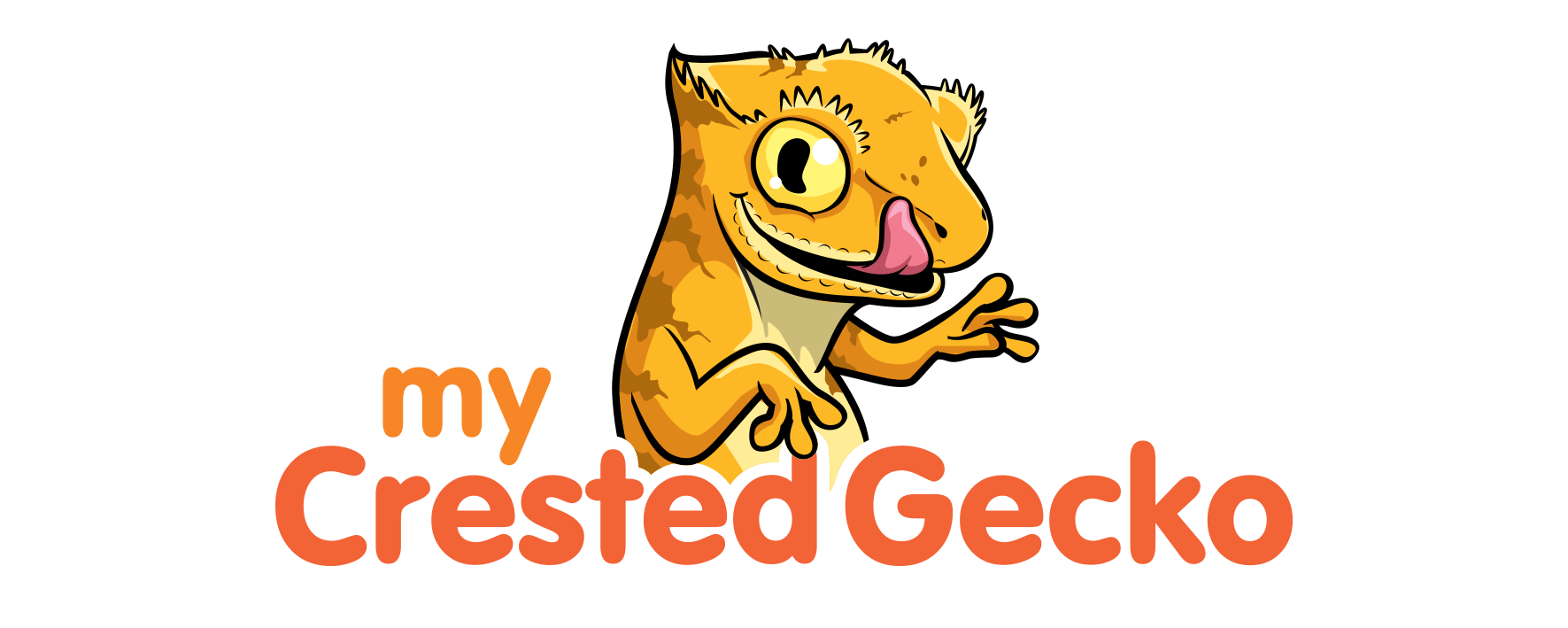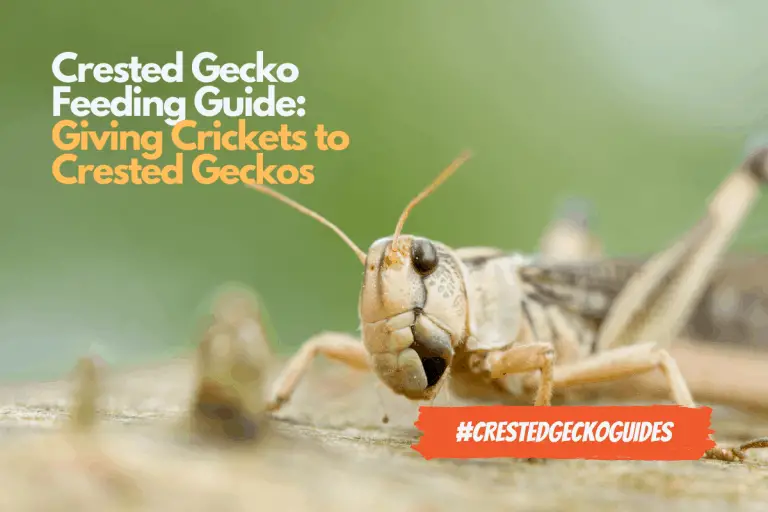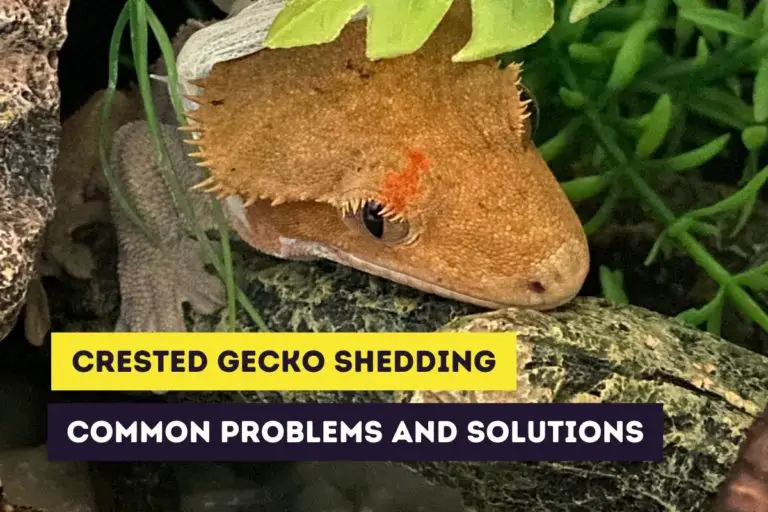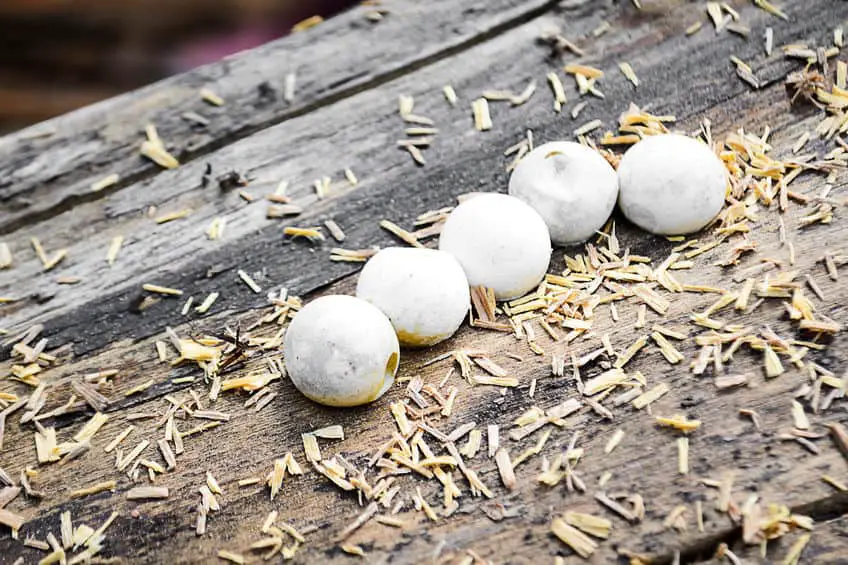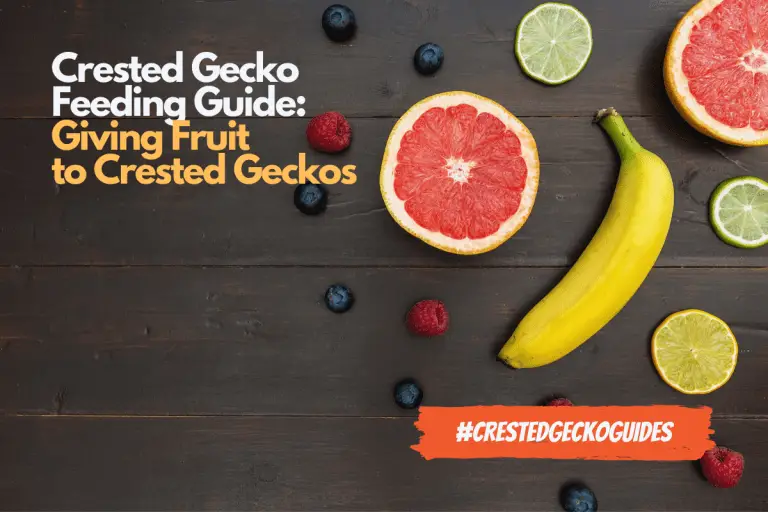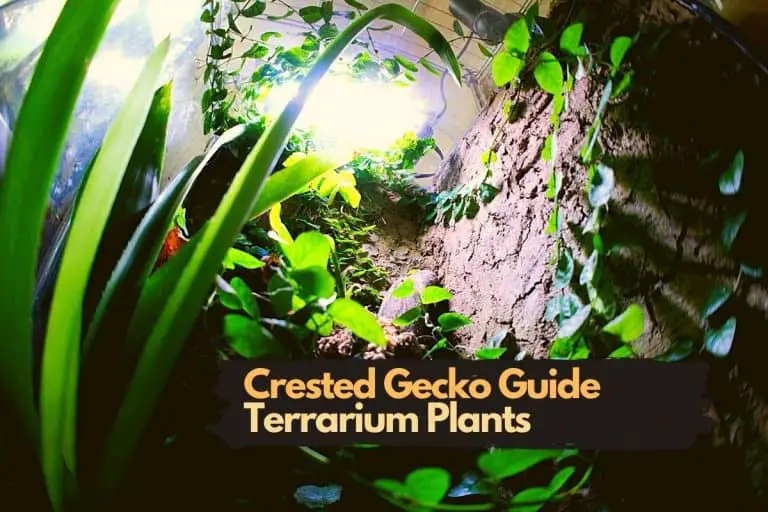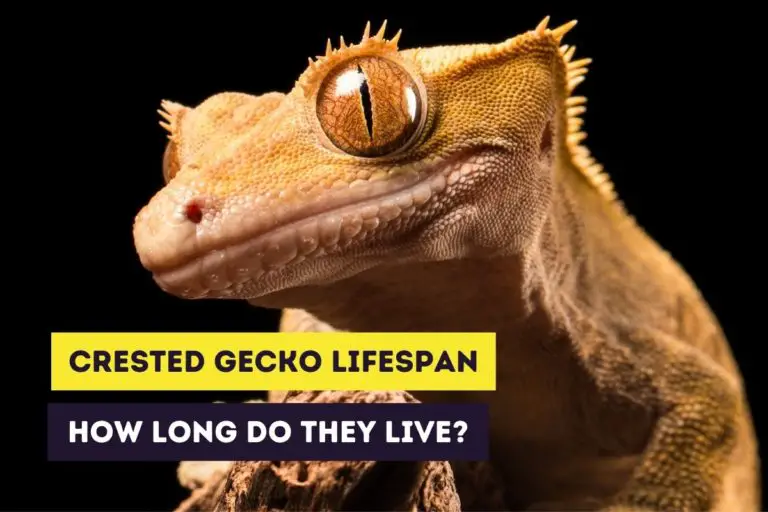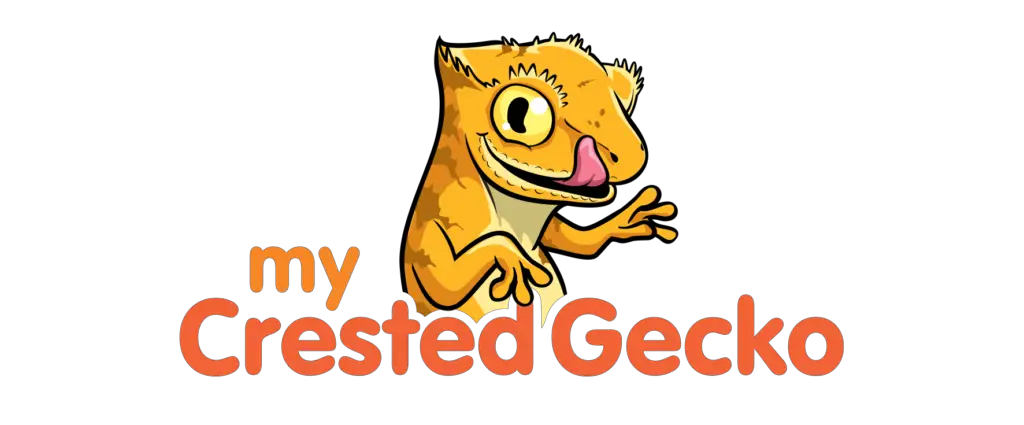Baby and Juvenile Crested Gecko Care (With Shopping List)
When you first get a crested gecko, you’ll probably get an older juvenile or even adult crested gecko as they are easier to handle. However, if you’re a more experienced owner you can get a baby crested gecko. Baby cresties are easier to bond with and you’ll get the opportunity to learn how to care for a crested gecko in almost every stage of its life: hatchling, juvenile, adult.
Baby crested geckos, also called hatchlings and juveniles, require special housing and require high humidity to shed their skin. They will need an appropriate diet to grow and become healthy adults. Baby crested gecko care isn’t difficult but you should be more delicate when handling them.
When talking about baby crested geckos in this article I mean both hatchlings and juveniles. Crested geckos are called juveniles in the stage up to their adulthood (around 18 months).
While older juvenile crested geckos (for example 6 months and older) aren’t really “baby crested geckos” anymore, I’ve included them here for convenience. You’ll notice that at certain points I’ll be making the distinction between younger and older juvenile crested geckos. Older juveniles can sometimes be compared to adult crested geckos in their needs and care.
If you’re interested in stickers or other products of crested geckos, you can always visit our Etsy Shop, which is called Artful Animalia. We currently only send stickers in the United States. If you’re interested in certain crested gecko-related products, don’t hesitate to contact us.
If you want to learn more about the care for adult crested geckos you should definitely read the following article about crested gecko care.
This site contains affiliate links to products we recommend and use ourselves. We may receive a commission for purchases that you make through these links. If you’re interested in learning more about our affiliate links, please visit our (affiliate) disclaimer.
Baby Crested Geckos
Baby crested geckos will hatch from their eggs after 2 to 3 months. The baby crested gecko will still be very little, measuring between 2.5 and 3 inches (6.5 to 7.5 centimeters) and weighing around 2 grams. The size and weight can depend on several factors such as genetics and incubation temperature.
You should weigh and measure your baby crested gecko each week. A kitchen scale can be used for this reason. The table below shows you the average growth rate of baby crested geckos.
| Age | Weight |
|---|---|
| 1 month | 2 grams |
| 2 month | 3 grams |
| 3 month | 4 grams |
| 4 month | 5 grams |
| 5 month | 7 grams |
| 6 month | 9 grams |
To learn more about the growth rate of crested geckos check out this article.
How to Handle a Baby Crested Gecko
Baby crested geckos are tiny and can be very fast which makes them less easy to handle, especially for a beginner. They also aren’t used to handling and will try to jump away which can be a bad thing when they don’t have something to jump on and fall on the ground.
It’s advised not to start handling a baby crested gecko until it’s a bit older (six months and older). The exception to this is that you’ll need to handle them to weigh and measure them and to clean the container. When you do handle a baby crested gecko always be careful and don’t grab it by its tail. This can easily lead to stress and tail loss.
Housing a Baby Crested Gecko
Baby crested gecko care shares similarities with the housing of adult crested geckos. They both need a humidity between 50 and 80 percent. The temperature should also be between 72 and 78 ° F (22 to 26 °C) during the day and 69 and 74 °F (20 and 23 °C) during the night. Indirect sunlight or artificial light should be provided 12 to 14 hours a day. At night, no special lighting is needed.
The differences in housing a baby crested gecko are on three major points: the enclosure, the substrate, and the plants.
Enclosure for baby crested geckos
Baby crested geckos (up to 10 grams) can be kept in small containers and don’t need to be kept in a terrarium. It’s even better to keep them in smaller containers or tanks that have a minimum size between 1.5 and 5 gallons such as a faunarium or a very small terrarium (8″x 8″x 12″). Juveniles between 10 and 25 grams can be kept in the first small terrarium between 7 and 10 gallons.
Hatchlings and juveniles will need these smaller enclosures because they’ll often have trouble finding food in a larger cage. They only need a small environment that has a few plants or branches and don’t need an entire system with climbing possibilities.
Some adult crested geckos will have trouble adjusting to larger terraria because they’re not used to the size of the terrarium. You can try to get your crested gecko adjusted to a larger sized terrarium by gradually switching to larger enclosures as the baby crested gecko grows up.
Substrates for baby crested geckos
Baby crested geckos are tiny and are miniature versions of adult crested geckos. Since they’re tiny you can’t use the same kind of substrate for baby crested geckos as you would for adults.
The substrate for baby crested gecko should have a low ingestions risk and should be able to be cleaned easily. This eliminates a lot of substrate types and only leaves you with two options since bark and soil can easily be ingested.
I would recommend that you use one of these substrates for your baby crested gecko:
- no substrate: if you don’t use a substrate in a terrarium for a baby crested gecko there’s obviously no risk of ingestion. There’s however a risk associated with using no substrate. The high humidity that baby crested geckos need will lead to the buildup of water on the surface of the terrarium. There’s also an added risk that bacteria will build up without a substrate. So, daily cleaning will be necessary.
- paper substrates: a more popular substrate for baby crested geckos is paper. It’s a cheap and safe way to provide a first substrate for the babies to walk on. You can use old newspapers or paper towels and can even continue to use them as your baby crested gecko grows older. It’s possible that your hatchling tears up the paper and will try to eat it. In such a case, you can opt for butcher paper, which is a lot sturdier and is less likely to tear.
Older juveniles can be kept in a terrarium with more naturalistic substrate but my recommendation is to be careful and wait until your crested gecko is adult before you get a substrate with an ingestion risk.
Terrarium plants and branches
Terrarium plants are useful to provide a hiding place and a way to climb around and explore the enclosure. Live terrarium plants are useful to increase the humidity and to give a more natural look to the terrarium. However, baby crested geckos benefit more from fake vines. A small container also isn’t a good place to fill with live plants.
Get one or two small branches and a small number of fake plants or vines to create hiding places. At least half of the container should be free of foliage just like the terrarium of an adult crested gecko.
When you house your older juvenile crested gecko in a terrarium, you can start with keeping live terrarium plants.
Baby Crested Gecko Diet
Dietary basics
The yolk sack of which hatchling comes has enough nutrients for a hatchling to last for the first days. It’s entirely possible that your baby crested gecko doesn’t eat the very first days.
A baby crested gecko will usually eat after its first shedding, which happens within 2 to 3 days after hatching. To be certain that your crested gecko has food you should place food in the container 24 to 48 hours after hatching.
Since crested geckos are omnivores they feed on both animal and plant matter. Although baby crested geckos can be fed a self-made fruit diet it’s best to stay use commercial crested gecko food like meal replacement powders. These contain all nutrients your baby crested gecko needs.
Feeding insects to baby crested geckos
Insects can be introduced fairly quickly, about a month after hatching. These crickets shouldn’t be bigger than the width of your crested gecko’s head. Baby crested geckos usually are able to eat small crickets that measure between ⅛ inch to ¼ inch depending on the size of your baby crested gecko.
The insects should be gut-loaded and dusted with calcium and D3 powder. A baby crested gecko can consume two crickets about every other day although this is not always recommended when feeding a commercial diet.
Water
Baby crested geckos need water but will usually drink droplets of water that remain after misting. You should however also place a water bowl in the container. This bowl should contain only a shallow amount of water to prevent the accidental drowning of your crested gecko.
What Do You Need for Baby Crested Geckos?
You can find everything you’ll need for both baby, juvenile, and adult crested geckos in our shopping list.
Baby crested geckos will start with a few decorations and (fake) plants in their container or tank but will eventually need a larger terrarium that can be filled with all kinds of decorations, plants, vines, and branches.
If you don’t want to search to collect all essentials for caring for your baby crested gecko you might want to consider a starter kit. A good crested gecko starter kit contains almost everything to start (except for food and feeding ledges).
Related Questions
Do baby crested geckos eat every day?
Baby crested geckos don’t need to eat every day but can eat every other day just like adult crested geckos. Depending on the kind of diet you give you can feed them every day to promote growth.
Can baby crested geckos be housed together?
Baby crested geckos can be housed together in a large enough terrarium. You should however separate them when they grow larger and can’t fit in a normal terrarium. It’s recommended to separate them at six months.
Want to Learn More?
If you want to learn more about crested geckos as pets, please read the following articles.
If you’re interested in getting crested geckos as pets you should also definitely read our article about (adult) crested gecko care.
